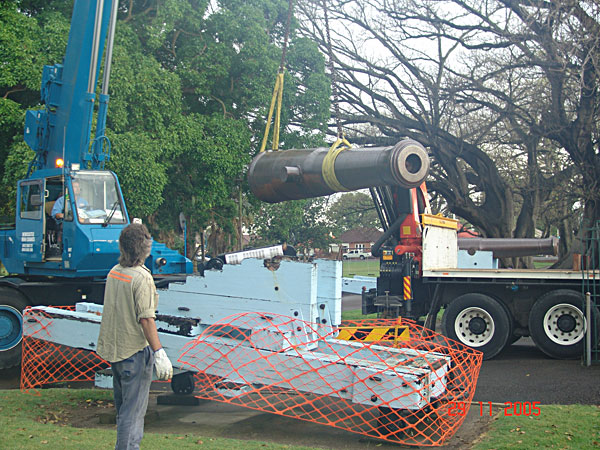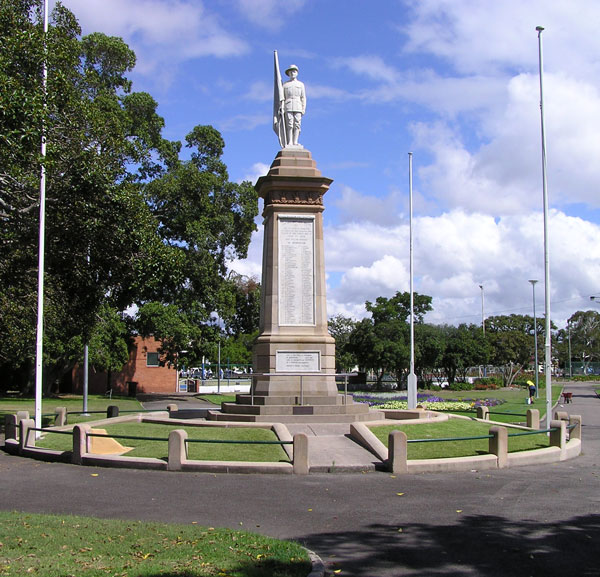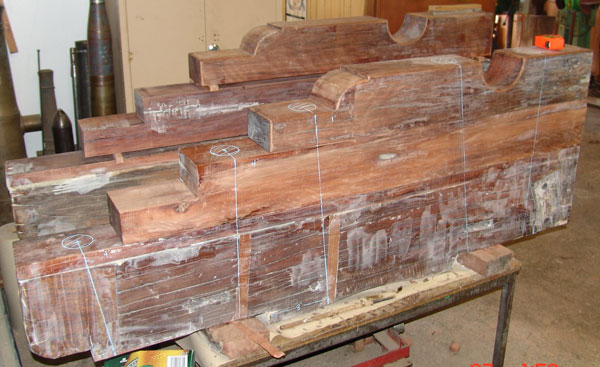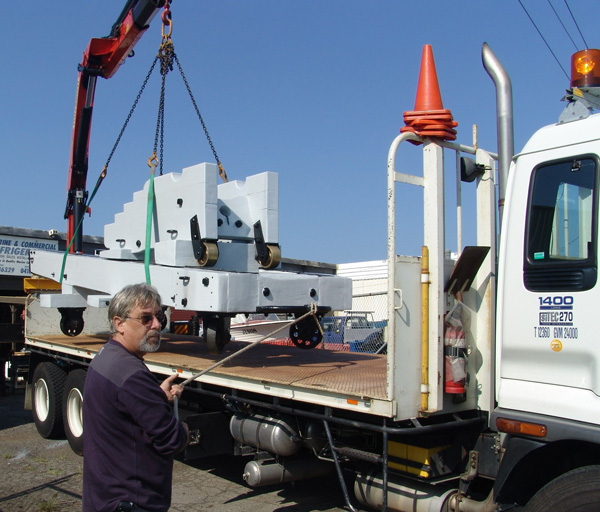Tuesday, 19 Dec 2006 saw a crowd gathered around the eastern gates to Gregson Park, Hamilton, NSW. Many had cameras so that they could witness the final stage of re-installation of two 42 pdr ML cannon onto extensively re-furbished dwarf mountings consisting of a gun carriage mounted on a wooden traversing platform with metal slides to absorb the recoil.
These cannon were fitted with a pivot point in front of the traversing platform as an aid to firing through the embrasures at Fort Macquarie, now the site of the Sydney Opera House. Most of the iron work was still on the carriages and has been faithfully built into new carriage and platforms fashioned in the main from old, well-seasoned, warehouse timbers using some modern adhesives (West System) to augment the traditional dowelling.
The current restoration was performed by David Roberge, Newcastle Gun Works, for Newcastle City Council. The attention to detail, the preservation and replacement where necessary of metal fittings, tracks, pins and bronze wheels make this restoration well worth a visit when you are next in Newcastle.
Cr Keith Parsons provided an able summary of the cannon, their place in the early defence of Sydney at Fort Macquarie and their removal and transport to Newcastle in 1903. They were re-erected by LTCOL Kirklady’s detachment in a cleared circular area facing the main entrance to the park. Subsequently the cannon were relocated to the eastern gate in 1919 to make way for the War Memorial.
In the 1960s the original teak carriages were partially rebuilt by “Ap” Jones, Newcastle City Council works foreman, and a member of the CMF (Army Reserve).
Councillor Keith Parsons underscored the historic importance of the cannon as a link to our past and heritage going back beyond WW1.
The 42-pdrs cannon were not common. It was a size that saw little use in England as they were already superseded by the 56-pdr but they were provided in response to colonial concern during and after Crimea. The 42-pdrs were erected at Dawes Point and Fort Macquarie, Sydney. Fort Macquarie was capable of providing supporting fire to Fort Denison, Kirribilli Point and Macquarie Point. They outranged the earlier battery on Dawes Point and represent the final stage of the development of close-in defence for Sydney.
Subsequent stages of the fortifications of Sydney moved towards the harbour entrance dominated by North, Middle and South Heads. As coastal gunnery improved, selected headlands from North of Newcastle to South of Port Kembla were fortified in order to protect essential ports and industries. In the 1960’s this solution was outmoded by the development of the ICBM and more recently by the capacity of missiles to be launched from well off-shore by either air or sea delivery.
Following the short ceremony I revisited the park recently and took my own photographs and later caught up with David Roberge to find out a bit more about the restoration process.
David allowed me to select a number of photographs of the restoration in progress from his collection. These amply illustrate the work performed.
Vic Rae
Editor Gunfire
Refs:
Heritas; Gregson Park Guns Heritage Impact Statement, 2005.
Webster P; A Brief on the Guns and Mountings of Hamilton Park, Newcastle, 2004.
Oppenheim P; The Fragile Forts, The Fixed Defences of Sydney Harbour 1788-1963, 2005.





